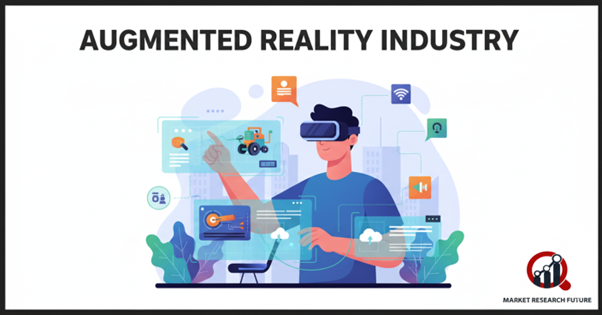Advancements in technology to drive adoption of augmented reality

Augmented Reality Adoption Overview
The concept of augmented reality (AR) is no longer merely a thing of the future; it is already revolutionizing industries and changing how we engage with both the digital and physical worlds. AR is resolving business issues and opening up new avenues for innovation in a variety of industries, including healthcare, gaming, retail, commerce, and even the military. The adoption of AR is expected to grow at an unprecedented rate due to the quick development of supporting technologies like cloud computing, 5G, and artificial intelligence (AI).
AR and the Metaverse Come Together
AR is seeing a resurgence in popularity due to the world's fascination with the metaverse. Businesses and consumers have been investigating how AR can combine the virtual and physical worlds ever since Facebook changed its name to Meta. AR superimposes digital content onto real-world environments, bringing immersive, interactive experiences to life, in contrast to virtual reality, which builds completely digital environments.
Consider NFTs. Thanks to the "See in AR" feature on platforms like Instagram, creators can now display digital collectibles in augmented reality. This makes ownership and display more interesting than before by enabling collectors to view NFTs as 2D virtual objects in real-world settings. In a similar vein, auction houses such as Sotheby's are using augmented reality filters to assist art buyers in seeing masterpieces up close prior to placing a bid. These uses demonstrate how AR has the power to completely change how we interact, share, and transact in digital environments.
AI Expands AR's Potential
Even though AI and AR are two different technologies, their combination is revolutionizing the field. AR mainly uses sophisticated algorithms to interpret environmental data, which AI is very good at. Businesses can increase accuracy, speed, and functionality by combining the two.
An application called ClipDrop, which allows users to instantly capture real-world objects and turn them into 3D models, is one example. After that, these models can be imported into programs like Google Docs, Photoshop, and even metaverse settings. Virtual trials, interactive marketing campaigns, and quicker product visualization are all being made possible by such 3D scanning technologies.
Opening up Business Possibilities
AR's capacity to provide rich, immersive experiences is becoming more widely acknowledged. AR is becoming widely used in manufacturing, logistics, healthcare, education, and training through visual, aural, and haptic interactions.
For example, AR-powered simulations lower the risks involved in real-life procedures by enabling medical professionals to practice delicate surgeries on virtual patients. AR is used in manufacturing to facilitate real-time maintenance and monitoring, and in logistics to optimize warehouse operations.
Additionally, the technology has advanced significantly in advertising and marketing. Brands used augmented reality (AR) to hold virtual product launches, exhibitions, and interactive promotions during the COVID-19 pandemic. One noteworthy instance was the introduction of the OnePlus Nord smartphone on the augmented reality platform Blippar, which provided viewers all over the world with an unforgettable, immersive experience.
The Role of Connectivity and Cloud
Two significant growth drivers have been the extensive use of smartphones and the incorporation of augmented reality into apps. AR experiences will get faster, smoother, and more dependable as 5G networks grow, lowering latency and facilitating real-time communication. In the meantime, the cloud is providing the infrastructure required to provide AR experiences to millions of users concurrently, resolving scalability issues. Additionally, developers are being empowered to easily create dynamic, content-rich augmented reality applications with the help of development tools like ARKit and ARCore.
Redefining Customer Involvement
AR is being used by retailers to improve consumer interaction and purchase decisions. AR fills the gap between online browsing and in-store shopping by enabling you to virtually try on clothing and preview furniture in your living room. Online supermarkets are combining convenience and trust by allowing customers to use augmented reality to interact with products before making purchases.
AR is transforming daily activities outside of retail. To make reading more accessible, AR-enabled apps, for instance, can scan images of printed books and turn them into audio. With immersive, interactive experiences that captivate users all over the world, gaming remains a hotbed of augmented reality innovation in the entertainment industry.
The Path Ahead
Even though it might take another ten years for AR to reach its full market potential, the advancements made in the last few years are impressive. AR is no longer a cutting-edge technology; rather, it is quickly becoming a necessity due to its growing content libraries, sophisticated development tools, and smooth integration with AI, 5G, and the cloud.
In the upcoming years, the industries most anticipated to benefit from AR are healthcare, biotechnology, retail, and entertainment. AR is positioned to become a key component of digital transformation in a variety of industries by providing immersive, connected, and highly personalized experiences.

Leave a Comment